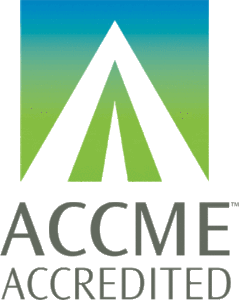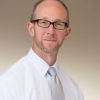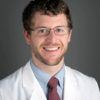| Emergency Medicine in Primary Care: Practicing According to the Evidence |
| Mon Mar 13, 2023 - Thu Mar 16, 2023 |
| 7:30am-12:50pm EST |
| Lido Beach Resort, Sarasota, Florida |
| SEMLA-3720230313 |
|

Live Webinar Access Information
Webinars are held via zoom and the Wednesday prior to the conference start date, an email will be sent with the zoom link.
Presented By
Presenter
-
Andrew D. Perron, M.D., F.A.C.E.P., F.A.C.S.M. (Learn More)

Professor of Emergency Medicine, Tufts University School of Medicine; Vice Chair for Education and Assistant DIO, Department of Emergency Medicine, Maine Medical Center; Certificate of Added Qualifications in Sports Medicine, Portland, ME -
Michael E. Winters, M.D., F.A.A.E.M., F.A.C.E.P. (Learn More)

Professor of Emergency Medicine and Medicine; Vice Chair for Clinical and Administrative Affairs, Department of Emergency Medicine, University of Maryland School of Medicine, Baltimore, MD -
Bryant Allen, M.D., F.A.C.E.P., F.A.A.E.M. (Learn More)

Assistant Professor; Assistant Program Director, Emergency Medicine Residency Program, Carolinas Medical Center, Department of Emergency Medicine, Charlotte, NC
Course Outline
Day 1
Thrombolysis for Stroke. (Perron)
Upon completion of this session, the participant should be able to: GL, COMP
- Analyze and integrate the principles and pathophysiology of stroke and stroke treatment.
- Appraise the applicable medical literature that is available to the clinician along with the latest ASA Guidelines.
- Debate the performance of thrombolysis for stroke to this point in time.
- Appraise the controversy in the medical literature regarding this therapy.
- Determine emerging technologies and therapies that may prove useful for the treatment of stroke in the ED.
PE and DVT in the Emergency Department. (Perron)
Upon completion of this session, the participant should be able to: EBM, GL, COMP
- Analyze the scope of the problem of thromboembolic disease in the ED.
- Employ the latest diagnostic algorithms and adjuncts available to aid the clinician in the diagnosis of thromboembolic disease.
- Appraise the evidence-based treatment of thromboembolic disease based on the latest applicable literature and apply applicable ACEP Guidelines.
- Assess the limitations of current diagnostic modalities for these diseases.
Pulmonary Emergencies:Pneumothorax and Pleural Effusion (Allen)
Upon completion of this session, the participant should be able to: COMP, EBM
- Describe imaging strategies in the evaluation and diagnosis of pneumothorax.
- Discuss current management guidelines for both traumatic and spontaneous pneumothorax.
- Discuss variation in management from malignant and non-malignant pleural effusions.
Aortic Emergencies. (Allen)
Upon completion of this session, the participant should be able to: COMP, EBM
- Specify the pathophysiology and clinical presentations, and formulate ED management using evidence-based medicine of the following:
a. Abdominal aortic aneurysm
b.Traumatic aortic disruption
c. Essentials of aortic dissection
Nephrolithiasis & Pyelonephritis. (Allen)
Upon completion of this session, the participant should be able to: COMP, GL, EBM
- Illustrate the pathophysiology and clinical presentation of these two entities.
- Specify the best-evidence strategy in both imaging for diagnosis of nephrolithiasis and management of this pathology in the Emergency Department.
- Discuss the classifications of upper urinary tract infections and pyelonephritis, as current IDSA guidelines for treatment of these classifications.
Day 2
GI Bleeds: Upper & Lower. (Allen)
Upon completion of this session, the participant should be able to: COMP, EBM
- Describe the gastrointestinal tract anatomy and pathophysiologic changes that result in presentation with bleeding.
- Determine the emergency department “essentials” for the assessment of the patient with GI bleeding.
- Develop a rational framework for the ED treatment of acute gastrointestinal bleeding, both upper and lower using evidence-based medicine.
Urogenital Emergencies: Torsion & Priapism. (Allen)
Upon completion of this session, the participant should be able to: COMP, GL
- Describe the anatomy, physiology and epidemiology of priapism and torsion.
- Discuss the evaluation and potential causes of both high and low flow priapism.
- Discuss ED management considerations and guidelines for the treatment of priapism.
- Describe the evaluation and bedside reduction technique for testicular torsion, including recent clinical decision tools and transfer recommendations.
Urogenital Emergencies: Torsion and TOA (Allen)
Upon completion of this session, the participant should be able to: COMP, EBM
- Describe the anatomy, physiology and epidemiology of ovarian torsion and TOA.
- Discuss the diagnostic workup and imaging limitations in the evaluation of ovarian torsion.
- Discuss the classification and treatment of complicated pelvic inflammatory disease, including the updated CDC guidelines for treatment of these classifications.
Suboxone Treatment Out of the ED
Addiction to opiates is a world-wide health care crisis. The emergency department is on the front line in this fight and emergency providers are more and more adding medically assisted treatment (MAT) to their list of things they have to offer this patient population.
Upon completion of this session, the participant should be able toCOMP
- Describe the extent of the opiate health care crisis.
- Define what is involved in initiating a MAT program in your hospital.
- Outline the steps that need to be followed when initiating a patient on MAT in the ED.
Adult Orthopedic Pearls and Pitfalls.
Orthopedic injuries are a frequently seen complaint in the Emergency Department. The vast majority are straightforward to diagnose and manage. There are some injuries, however, that are subtler in presentation and more complicated to manage. This session will focus on the latter group of injuries. Upon completion of this session, the participant should be able to: EBM, COMP
- Detect the presentation and diagnostic pitfalls associated with posterior shoulder dislocation.
- Determine an appropriate work-up of compartment syndrome and distinguish the myriad ways it can present.
- Appraise those at risk for knee dislocation and relate the time-imperative for reduction.
- Demonstrate understanding of the work-up and evidence-based treatment for native hip dislocation, as well as occult hip fracture.
Day 3
Minor Closed Head Injury: An Evidence-Based Approach
Upon completion of this session, the participant should be able to: EBM, GL, COMP
- Assess and relate the pathophysiology of minor closed head injury.
- Appraise the literature as it pertains to minor closed head injury and apply ACEP Guidelines as they relate to minor CHI.
- Recommend diagnostic algorithms appropriate for the evaluation and management of minor CHI in light of best-evidence available.
Pericarditis and Myocarditis: How Can 2 Diseases Sound So Similar and Act So Differently?
Upon completion of this session, the participant should be able to: EBM, COMP
- Illustrate the pathophysiology and clinical presentation of these two entities.
- Differentiate the potential pitfalls in the diagnosis and management of these diseases.
- Analyze the commonalities and differences of these closely related diseases.
- Recommend evidence-based work-up and treatment options for pericarditis and myocarditis.
Acute Coronary Syndrome in the ED: So Many Drugs and So Little Time
Upon completion of this session, the participant should be able to: EBM, GL, COMP
- Analyze the scope of the problem of ACS in the ED.
- Integrate the evidence-based treatment of ACS based on the latest applicable literature.
- Relate the areas of controversy in the treatment of this disease entity.
- Assess emerging therapies that may prove useful for the treatment of ACS in the ED.
- Apply and integrate the updated ACC/AHA guidelines for the management of patients with unstable angina and non ST-segment elevation myocardial infarction.
Peri-Arrest Pearls for the Crashing Patient
Upon completion of this session, the participant should be able to: GL, COMP
- Discuss pearls and pitfalls in the management of patients at high risk for peri-intubation cardiac arrest.
- Discuss new updates from the AHA guidelines that improve outcomes in cardiac arrest patients.
- Identify the critical components of post-cardiac arrest care that improve meaningful neurologic survival.
Deadly Allergies and Anaphylaxis
Upon completion of this session, the participant should be able to: COMP, EBM
- Determine the clinical criteria for anaphylaxis using The World Allergy Organization guidelines..
- Appraise the use of epinephrine in patients with anaphylaxis using evidence-based medicine.
- Assess the role of second-line medications commonly used in the treatment of anaphylaxis.
- Specify which patients with anaphylaxis require continued observation or admission.
Day 4
Recent Critical Care Articles You’ve Got to Know!
Upon completion of this session, the participant should be able to:
COMP, EBM
- Appraise key evidence-based medicine articles from the recent critical care and emergency medicine literature.
- Plan the integration of recent evidence into the practice of emergency medicine.
Crashing Obese Patient
Upon completion of this session, the participant should be able to: COMP
- Describe the anatomic and physiologic changes in the obese patient that affect emergent airway management.
- Discuss important changes to mechanical ventilation in the critically ill obese patient.
- Discuss critical changes to high-risk medications in the critically ill obese patient.
Early Goal Directed Therapy in Sepsis: Why All the Fuss?
Upon completion of this session, the participant should be able to: GL, COMP
- Determine the pathophysiology of sepsis and the sepsis syndrome.
- Evaluate the scope of the problem regarding effective management of sepsis in the ED.
- Appraise the principles of early goal-directed therapy in the treatment of sepsis.
- Employ the applicable “surviving sepsis” guidelines.
- Assess the potential gains that can be realized, as well as the pitfalls to avoid, in the management of sepsis utilizing early goal directed therapy.
Community Acquired Methicillin Resistant Staphylococcus aureus (CA-MRSA): An Update
Upon completion of this session, the participant should be able to: EBM, COMP
- Assess risk factors for CA-MRSA infection.
- Specify the best-evidence management of skin and soft-tissue infections in the era of drug resistance.
- Assess both pharmacologic and non-pharmacologic management strategies for this disease entity.
- Demonstrate familiarity with the latest treatment recommendations for CA-MRSA as directed by the CDC.
Low Back Pain in the ED: What We Know, What We Think We Know, and What We Don’t Know
Upon completion of this session, the participant should be able to: EBM, COMP
- Apply an evidence-based approach to the evaluation of non-traumatic back pain.
- Differentiate the “red flags” that should heighten the suspicion for serious pathology in the evaluation of back pain.
- Assess and differentiate both effective as well as disproved therapies in the treatment of back pain using the Cochrane Database.
- Specify potential pitfalls in the treatment and disposition of low back pain.
Accreditation
AMA
American Medical Seminars, Inc. designates this live activity for a maximum of 20 AMA PRA Category 1 Credits™. Physicians should claim only the credit commensurate with the extent of their participation in the activity.
Accreditation Statement
 American Medical Seminars, Inc. is accredited by the Accreditation Council for Continuing Medical Education (ACCME) to provide continuing medical education for physicians.
American Medical Seminars, Inc. is accredited by the Accreditation Council for Continuing Medical Education (ACCME) to provide continuing medical education for physicians.
Venue
Lido Beach Resort, Sarasota
Florida
34236
United States

Beautifully situated upon a private white sand beach near Siesta Key, the Lido Beach Resort is the perfect destination to experience the relaxed culture and natural beauty of Florida’s Gulf Coast. Our Sarasota luxury resort invites you to kick back and take in the picturesque views from our 300-foot white sand beach, enjoy a refreshing swim in our two year-round heated pools (one for families and one for adults only), and indulge with an array of resort amenities ideal for romantic weekends, family vacations and relaxing Gulf-front getaways.
Accommodations
Hotel Reservation
To arrange your stay, please use the above “Hotel Reservation Link.”
The special room rate will be available on a first come first serve basis until the group block is sold-out.
-
- Register by February 12, 2023 to take advantage of preferred rates.
- Save $9 on reduced resort fee. Reduced from $29 to $20 per room, per day.
- Free self-parking for AMS guests.
- Automatic raffle entry with registration.
Rent a Car with Enterprise or National:
To book your CME conference car rental and to receive special rates exclusively for AMS attendees, you may call or book online with our contracted companies, Enterprise/National
Things To Do
Immerse Yourself In Sarasota
Let us help with your area attractions and things to do. As one of the top family vacation destinations in America, Sarasota is renowned for its cultural and environmental amenities. Not only are we home to the #2 beach in the United States as voted by TripAdvisor in 2022, but Sarasota is a mecca for patrons of the arts and has the highest concentration of Zagat® rated restaurants in Florida. It’s no wonder Sarasota was ranked one of the Top 100 Best Places to Visit in Florida in 2022 by US News and World Report.
Sarasota offers a truly impressive blend of leisure, shopping, remarkable cuisine and popular attractions. As Florida’s cultural capital, you can’t go wrong with our museums, plays, symphony, or Sarasota’s very own opera house.
So sail into a breathtaking sunset, golf on lush green fairways, explore unspoiled fishing waters or just relax and sink your toes into the finest beach sands in the world.
If you’re not grabbing your sunblock already, keep reading about all that Sarasota has to offer.
Sarasota Beaches
With numerous beaches to choose from, the most notable being Siesta Key Beach with its quartz crystal, powdered sugar white sand. For those who prefer to go shelling, try out Lido Key or take a short drive to Venice Beach to hunt for fossilized shark’s teeth.

Area Attractions
From aquariums to spring training baseball and botanical gardens to airboat tours of gators in their natural habitat, there is something for everyone! Make sure you check out the events calendar for annual traditions including our very own Chalk Festival and the Siesta Key Master Sand Sculpture Contest.

Dining
Whether you prefer fine dining, beachfront or lighter fare, Sarasota has the highest concentration of Zagat® rated restaurants in Florida. Our award-winning dining overlooks world class beaches, stunning skylines, and fills downtown Sarasota. Many offer outdoor dining that can be enjoyed year round! If you want to know some of our recommendations, you may download this guide.

Arts & Culture
The historical John and Mable Ringling Museum of Arts is the state art museum of Florida. These palatial grounds are home to a world-renowned collection of Rubens, the Circus Museum, Ca’d’Zan, Ringling’s Mansion and Bayfront Gardens. You will also find the historic Asolo Theater on the premises. But that’s not all, Sarasota’s performing arts rivals those of much larger cities.

Sports & Outdoor Activities
Voted as 2014’s Best Sport Friendly Vacations Destination by Sports Events Magazine, Sarasota and the surrounding area has over 25 golf courses, a world-class aquatics and rowing facility, and one of the largest polo clubs in the country! Whether paddle boarding in the Sarasota Bay or running the Legacy Trail, you’re sure to find something that gets your heart racing!

Shopping
Whatever your shopping preferences are, Sarasota has something to suit your needs. Spend the afternoon in historical St. Armand’s Circle, visit the Ellenton Outlet Mall just 20 minutes North or enjoy our newest addition- the high-end shops of University Town Center (more than 100 stores).

AMS Cancellation Policy: American Medical Seminars has implemented a Worry-Free Cancellation policy. Written cancellations received 30 or more days prior to the conference start date will be eligible for a full refund of the registration fee paid. Cancellations received less than 30 days, please send an email to mail@ams4cme.com asking to be switched to a future conference. We are happy to transfer you to any conference scheduled to take place within the next two years. Even if you are not yet sure which conference you wish to attend. If you are an international attendee and need to cancel the seminar after an Invitation Letter has been sent, there is a $150.00 cancellation fee.
Disclaimer: In the event that AMS is required to cancel a live conference, registrants will receive a full refund within 7 business days. AMS is not responsible for charges associated with cancelled flights or hotel rooms.
Register



